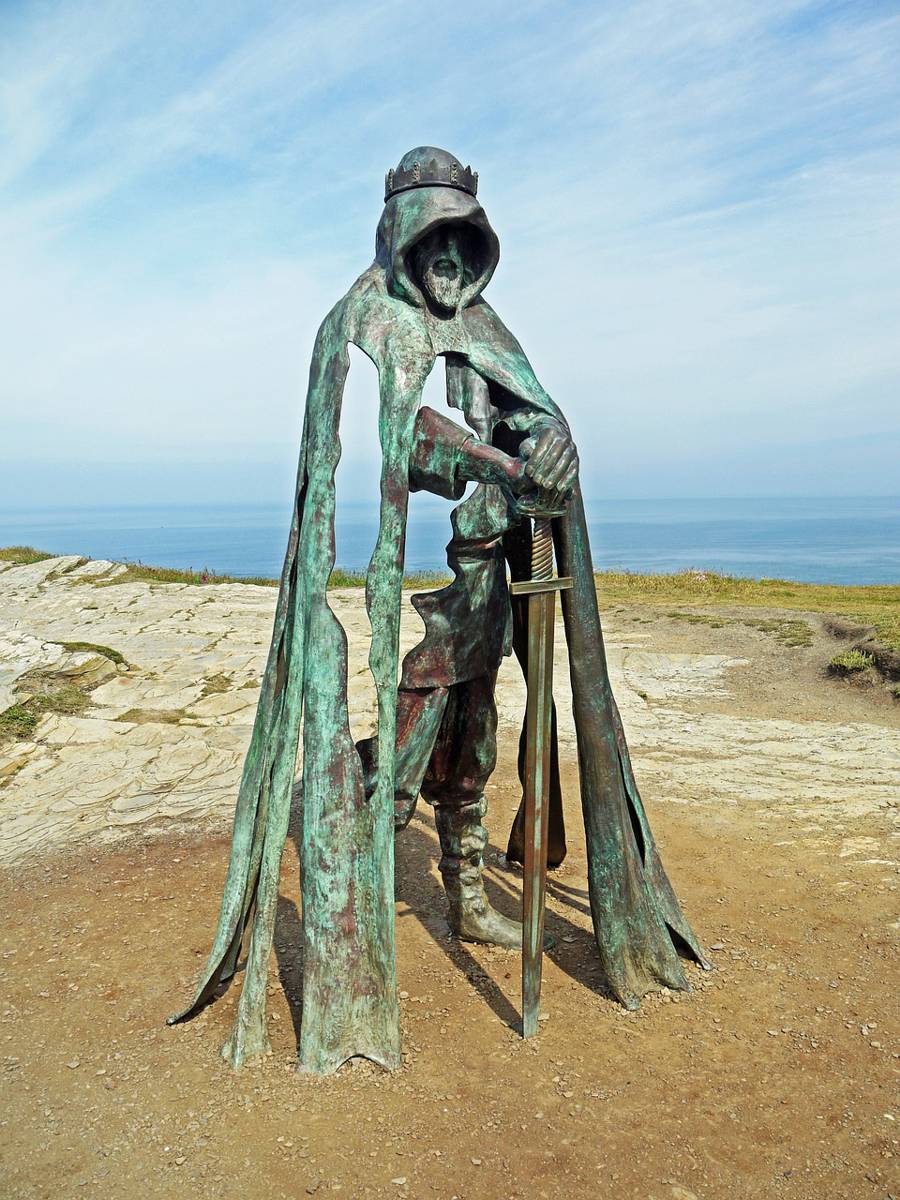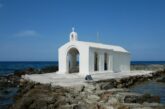Visit Legendary Tintagel where Myths Meet the Sea
Tintagel, a quaint Cornish village perched on the rugged cliffs of North Cornwall, is a place where history, legend, and natural beauty converge.
From the mystical tales of King Arthur to the breath-taking coastal views, Tintagel offers an enchanting experience for any visitor. This guide dives into the must-see attractions, practical tips, and hidden gems that make Tintagel a unique destination.
A Stroll Through History at Tintagel Castle
Tintagel Castle, the crown jewel of the village, is steeped in history and legend. Believed to be the birthplace of King Arthur, the castle’s ruins provide a tangible link to the past. Built between the 5th and 7th centuries, the site was a significant seat for Cornish kings. Excavations have revealed Mediterranean pottery, indicating Tintagel’s role as a trading hub during the Dark Ages.
In the 12th century, Geoffrey of Monmouth’s writings further entrenched Tintagel in Arthurian lore. Richard, Earl of Cornwall, capitalized on this mythos by constructing a castle to bolster his association with the legendary king. Though Richard seldom stayed there, his efforts ensured Tintagel’s place in history.
The castle is accessible via a dramatic bridge that spans a chasm, offering stunning views of the coastline. Visitors should book tickets online in advance to avoid long queues and secure a convenient time slot for crossing the bridge. Remember to dress appropriately for the often windy conditions and wear sturdy footwear to navigate the rocky terrain.
A Tapestry of Myth and Magic
Tintagel, a mystical place on the Cornish coast, is where legends come alive. Its dramatic cliffs and ancient ruins are not just remnants of history but are also the backdrop for some of the most captivating tales of the Arthurian legend.
The stories of King Arthur, Merlin, and other mythical figures have made Tintagel a focal point of British folklore.
The Birthplace of King Arthur
One of the most enduring legends associated with Tintagel is that it was the birthplace of King Arthur. This claim was popularized by Geoffrey of Monmouth in his 12th-century work, Historia Regum Britanniae (The History of the Kings of Britain).
Geoffrey wrote that Arthur was conceived at Tintagel Castle through the magical intervention of Merlin, who disguised Uther Pendragon, Arthur’s father, to seduce Igraine, the wife of the Duke of Cornwall. While there is no historical evidence to confirm this, the tale has firmly embedded Tintagel in Arthurian lore.
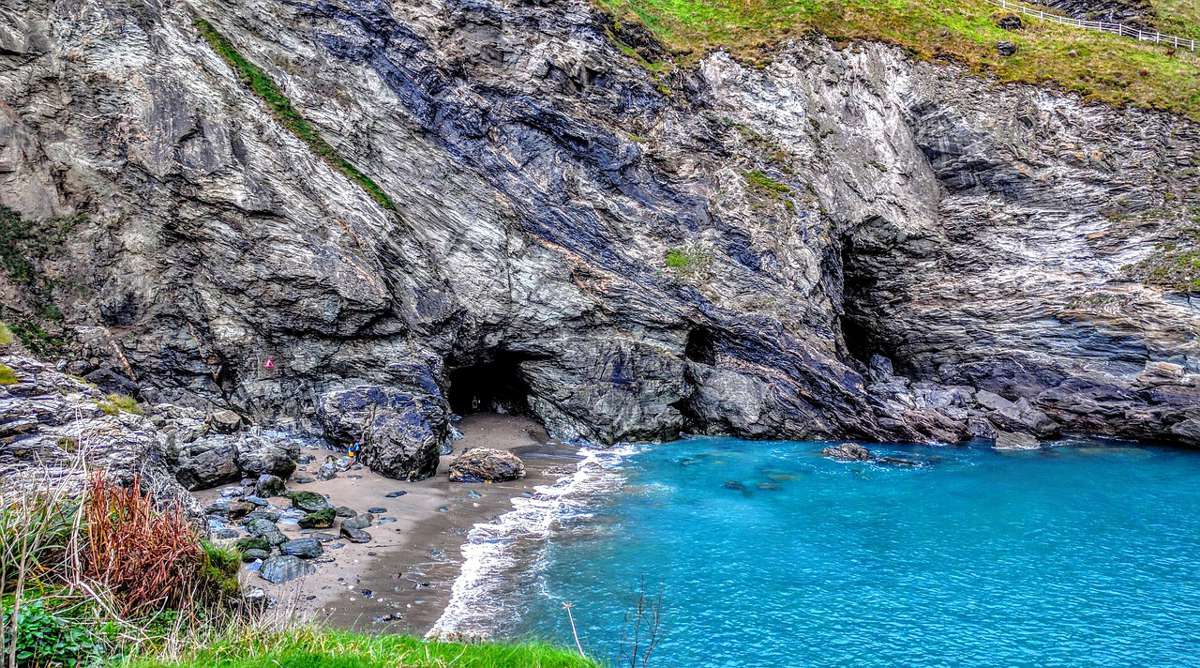
Merlin’s Cave
Beneath the cliffs of Tintagel lies a sea cave known as Merlin’s Cave. This natural formation, accessible at low tide, is said to be the home of Merlin, the legendary wizard. According to the myth, Merlin used his powers to protect and guide the young Arthur.
The cave’s mysterious atmosphere, combined with the sound of the waves crashing against the rocks, adds to the enchantment and allure of the legend.
The Sword in the Stone
The story of King Arthur would be incomplete without mentioning Excalibur, his magical sword. While the legend of Excalibur is often associated with other locations, Tintagel also claims a part in this mythos.
It is believed that the sword was forged on the island, blessed by Merlin, and later returned to the Lady of the Lake. The presence of a sword sculpture on the island, known as the “Sword in the Stone,” symbolically represents this connection to Arthurian legend.
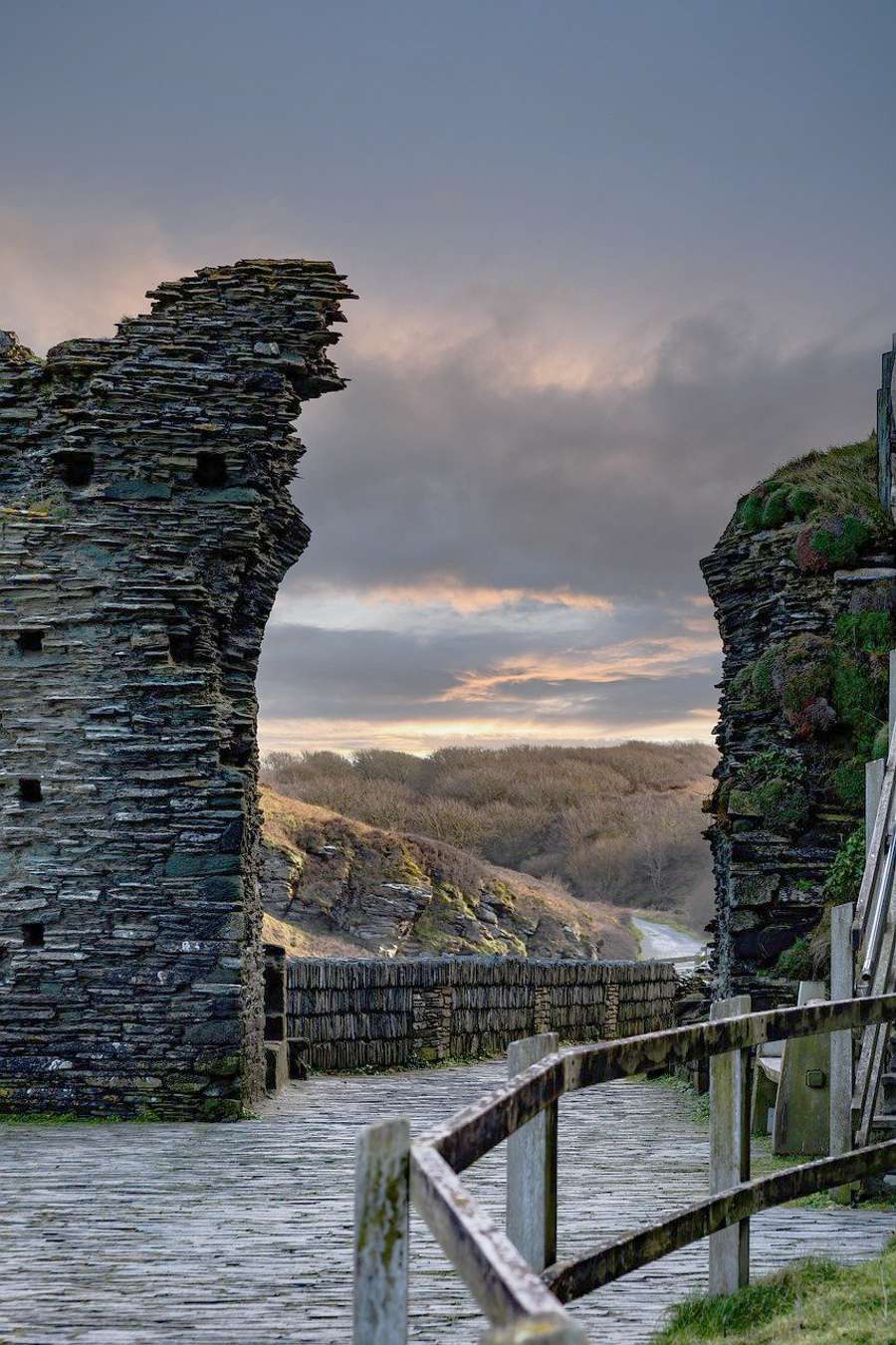
Tristan and Iseult
Tintagel is also linked to the tragic romance of Tristan and Iseult, a tale that has been intertwined with Arthurian legend over the centuries. According to the legend, King Mark of Cornwall, who resided at Tintagel, sent his nephew Tristan to fetch Iseult from Ireland.
However, Tristan and Iseult accidentally drank a love potion, leading to a forbidden love affair. This story of love and betrayal is one of the many romantic tragedies associated with the castle.
The Lady of the Lake
Another figure associated with Tintagel is the Lady of the Lake, the mystical enchantress who gave Arthur his sword, Excalibur, and later received it back upon his death.
Legends suggest that she resided in the waters near Tintagel, adding another layer of mystical connection to the Arthurian legends.
Richard, Earl of Cornwall
Richard, Earl of Cornwall, who built the castle in the 13th century, also contributes to Tintagel’s legendary status. Although he never lived there, his decision to construct the castle was driven by the desire to associate himself with the Arthurian legend.
This strategic move reinforced the castle’s mythical reputation and attracted visitors and storytellers alike.
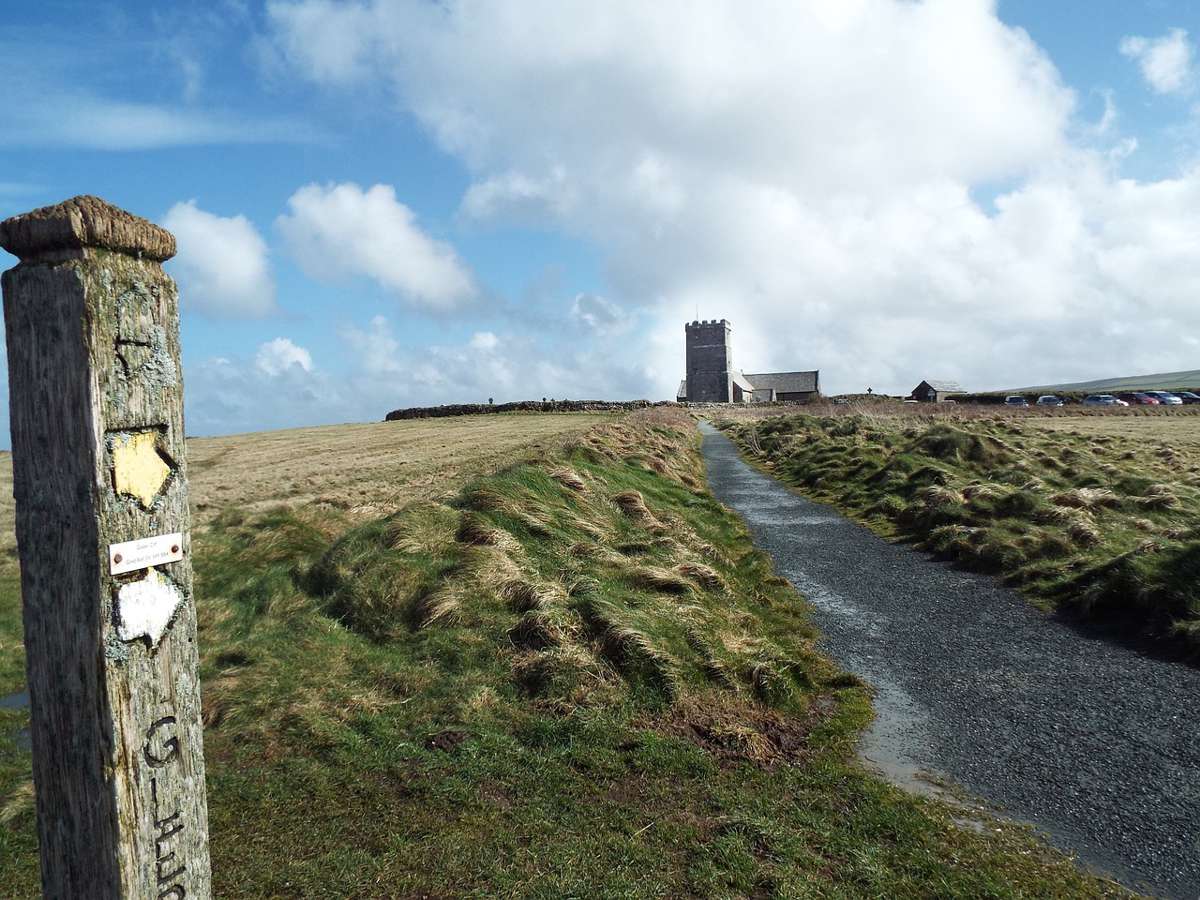
The Impact of Victorian Tourism
The Victorian era saw a resurgence of interest in Tintagel, spurred by the romanticism of the period and a renewed fascination with medieval history and mythology.
Victorian tourists flocked to Tintagel, drawn by the stories of King Arthur and the picturesque ruins of the castle. This period cemented Tintagel’s status as a must-visit destination for those intrigued by its legendary past.
Modern-Day Tintagel
Today, Tintagel continues to captivate visitors with its blend of history and legend. The site is maintained by English Heritage, which has introduced measures to preserve its integrity and enhance the visitor experience.
The recently constructed footbridge, which mimics the layout of the original castle, provides spectacular views and a direct connection to the legendary past of Tintagel.
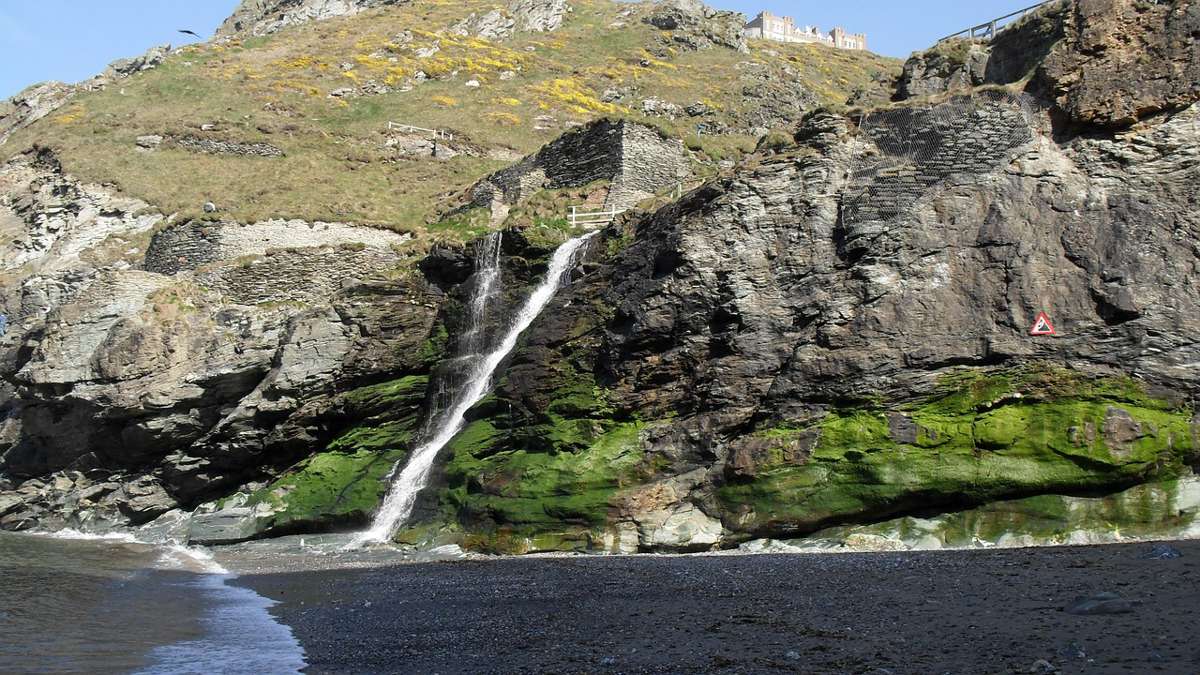
Exploring Tintagel Village
After absorbing the history at the castle, a wander through Tintagel village reveals more treasures. The Old Post Office, a 14th-century stone building, showcases medieval architecture and is now a museum maintained by the National Trust. Nearby, King Arthur’s Great Halls provide an immersive experience into the Arthurian legends with detailed exhibits and grandiose halls.
For a more leisurely experience, Tintagel’s local eateries offer a delightful respite. The Cornish Bakery is a must-visit for traditional Cornish pasties, while the Vega Vegan Café provides a healthy, plant-based alternative. For a sit-down meal, The Cornishman Inn serves hearty pub fare in a cosy setting.
Natural Wonders and Outdoor Adventures
Tintagel’s natural beauty is as captivating as its historical allure. Merlin’s Cave, located beneath the castle, is accessible at low tide and adds a touch of magic to any visit. The cave is named after the legendary wizard and is steeped in myth. The surrounding beach offers a serene spot to enjoy the coastal scenery.
For those keen on hiking, the South West Coast Path runs through Tintagel, offering spectacular views of the rugged coastline. A hike to Rocky Valley reveals ancient labyrinth carvings and picturesque waterfalls. Further afield, St Nectan’s Glen, a wooded valley with a stunning waterfall, is a peaceful retreat perfect for nature lovers.
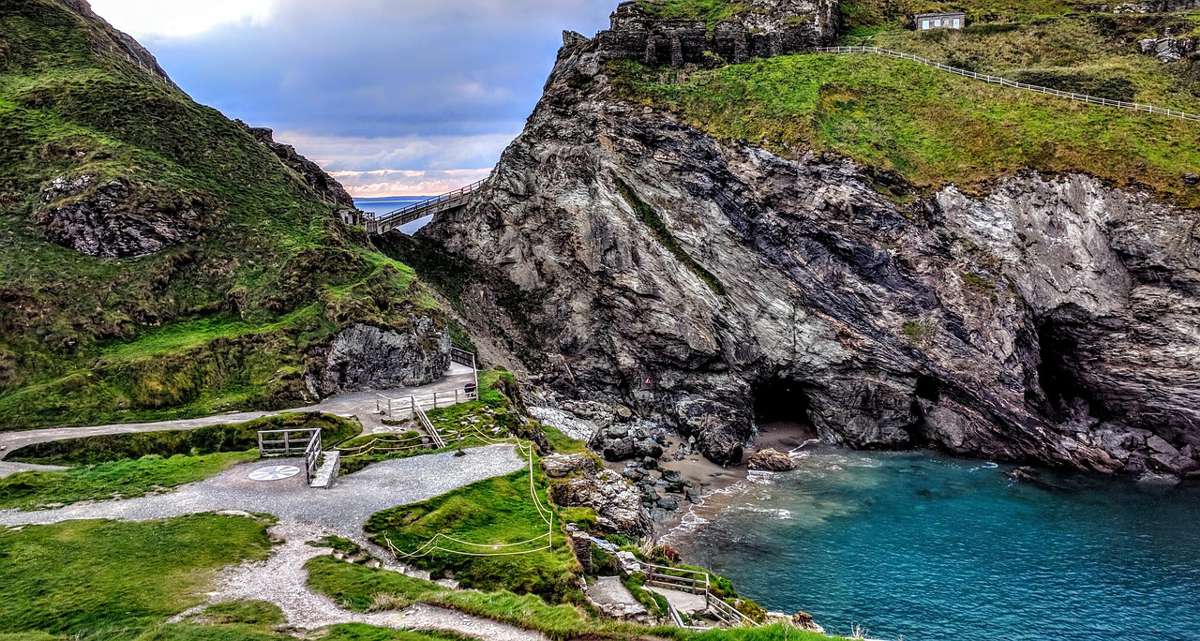
Practical Tips for Your Tintagel Visit
- Getting There: The nearest train station is Bodmin Parkway, from where you can take a taxi or a bus to Tintagel. Buses are infrequent, so a taxi might be a more reliable option, especially if you’re travelling in a group.
- Parking: Tintagel offers several pay-and-display car parks. The Tintagel Visitor Centre Car Park and King Arthur’s Car Park are popular choices. Arrive early, especially during peak season, to secure a spot.
- Weather: Cornish weather can be unpredictable. It’s best to visit on a clear day to fully appreciate the views. Bring layers and a waterproof jacket to stay comfortable in the ever-changing conditions.
- Food and Drink: Bringing snacks or a picnic is advisable, especially if you plan to spend several hours exploring. The castle site has limited facilities, so stocking up in the village before your visit is a smart move.
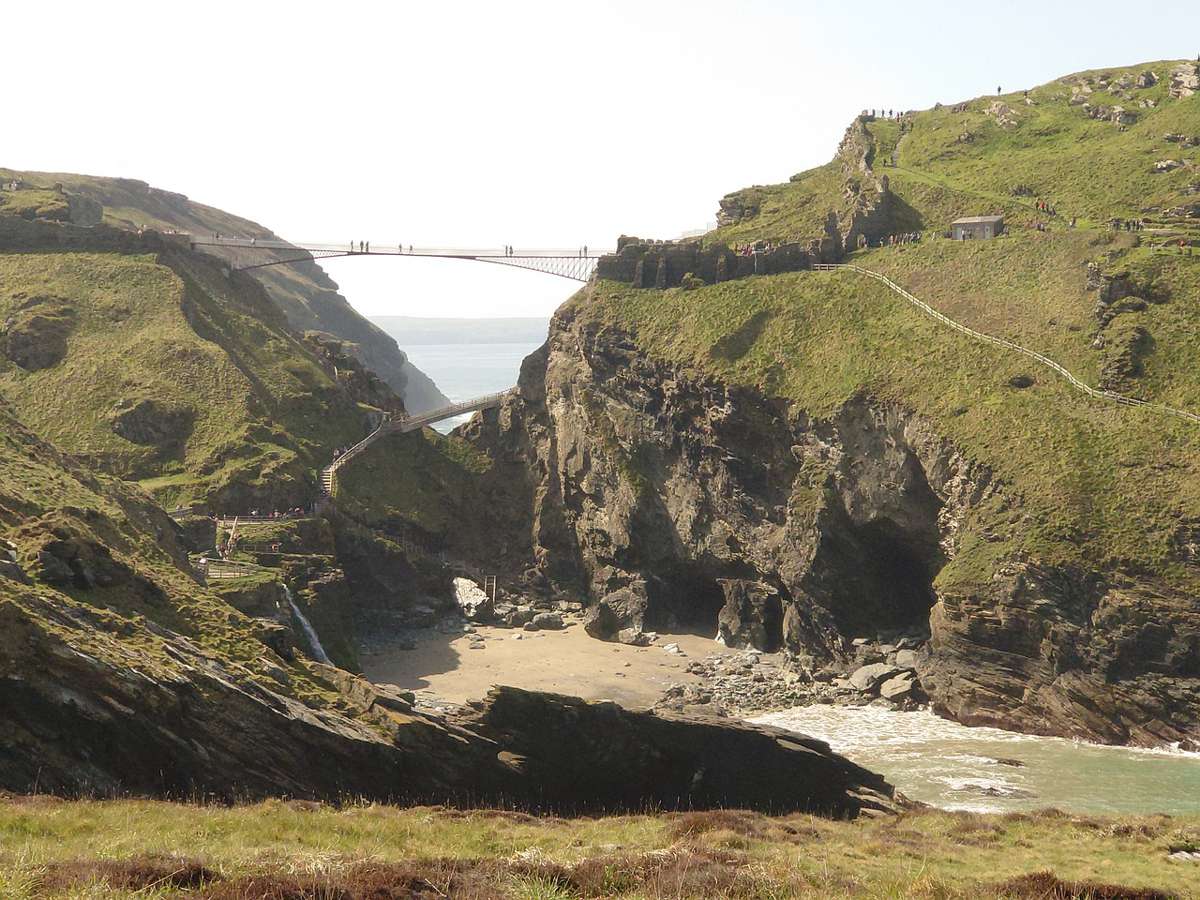
Tintagel Promises an Unforgettable Experience
Tintagel is more than just a destination; it’s a journey through time, myth, and nature. Whether you’re tracing the steps of ancient kings, soaking in the dramatic landscapes, or indulging in local delicacies, Tintagel promises an unforgettable experience. Plan your visit, embrace the legends, and let Tintagel’s magic weave its spell.




